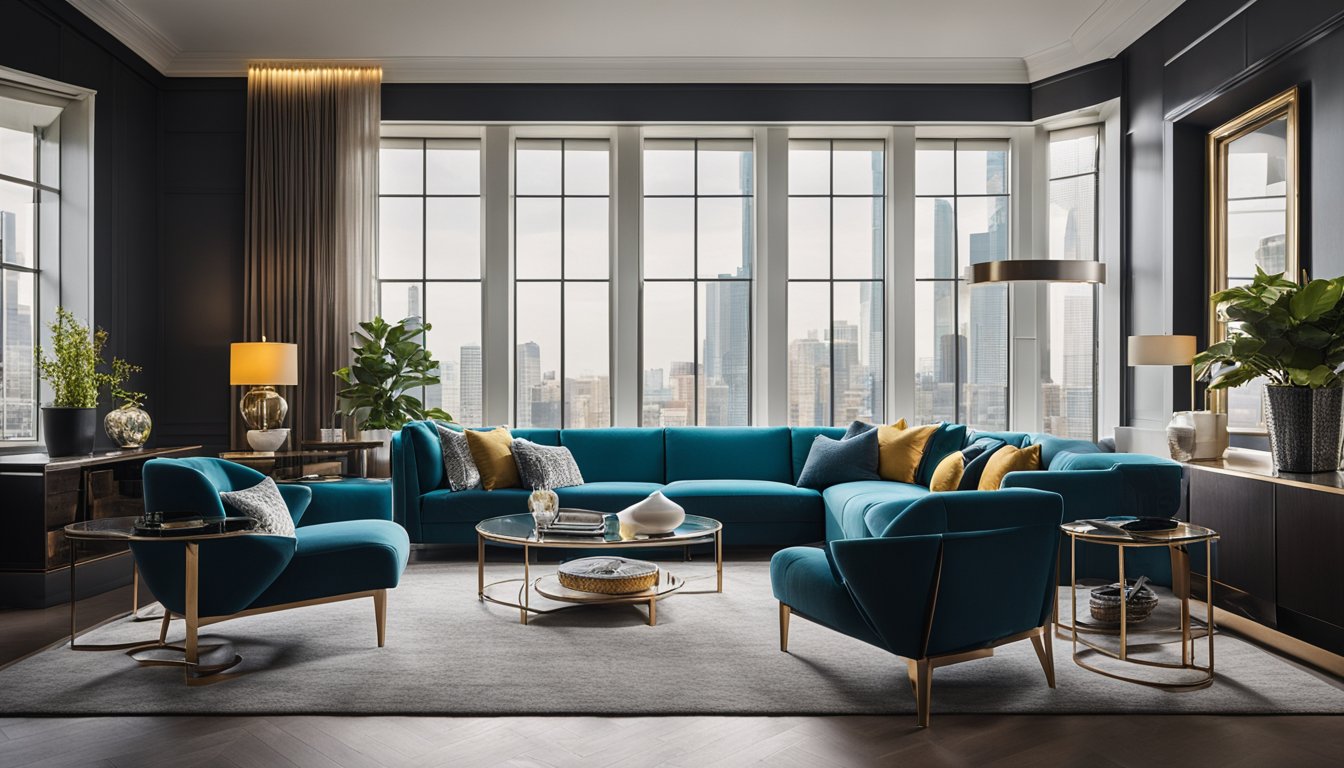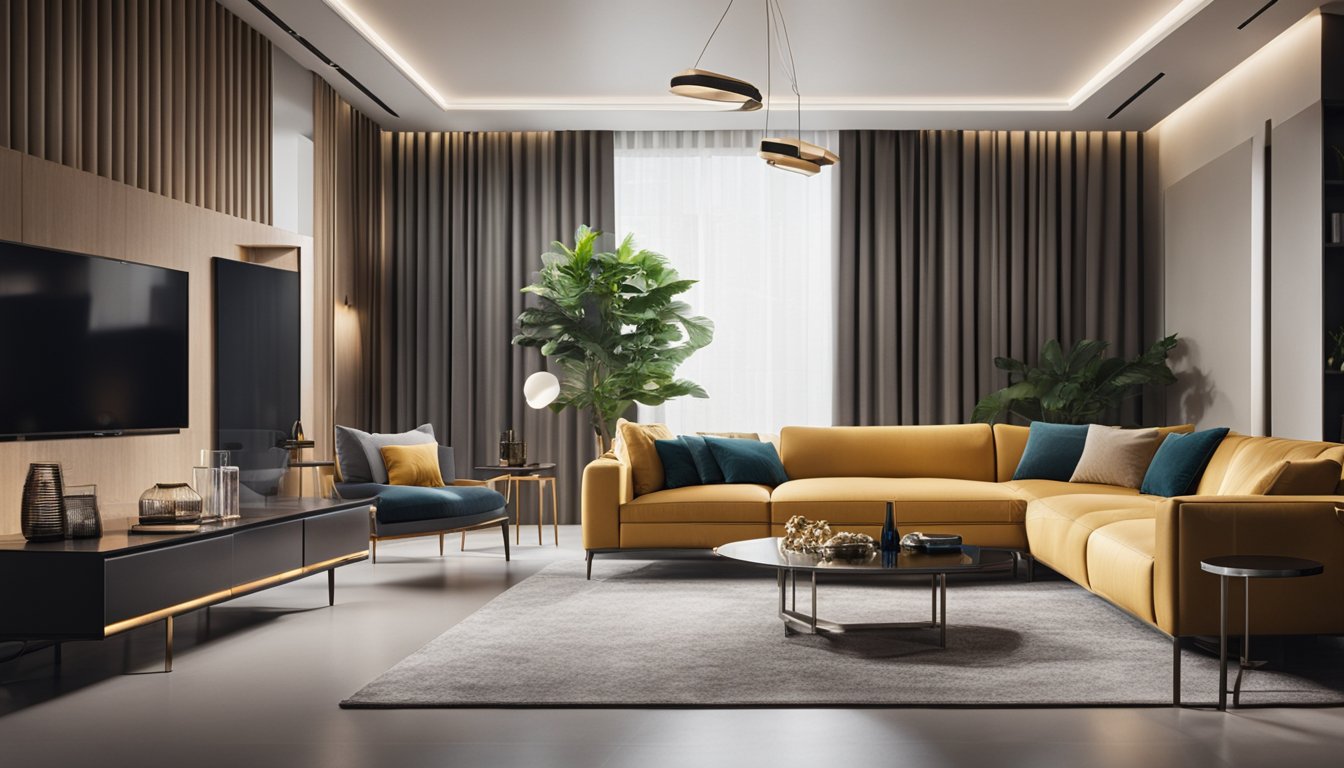Late updated: 11 Apr 2025 14:04
Written by: Daniel Harper
Creative Ways To Modernise Classic Interior Designs: Fresh Ideas for Timeless Spaces
Transforming classic interiors with modern touches is an art that requires a balance of old-world charm and contemporary flair. By thoughtfully combining these elements, we can create spaces that are not only timeless but also resonate with today’s aesthetic standards. Modernising classic interior designs involves integrating innovative materials, updating colour palettes, and blending textures without losing the essence of tradition.

One effective way to achieve this blend is by introducing subtle contemporary features, such as sleek lighting fixtures or minimalist furniture, into traditional settings. The beauty of classic interior designs lies in their ability to evolve with layers of history, while small but impactful updates can breathe new life into these spaces. This ensures that your interiors remain fresh and relevant in a constantly changing design landscape.
Incorporating modern elements doesn't mean discarding the charm of classic designs. The use of strategic colours and textures can enhance this fusion, providing a cohesive look that honours the past while embracing the future. As we navigate this design evolution, it is crucial to maintain a respectful nod to heritage while seamlessly integrating modern influences.
Key Takeaways
- Combine traditional charm with modern flair for timeless spaces.
- Use contemporary features strategically to enhance classic designs.
- Blend colours and textures to maintain a cohesive aesthetic.
Blending Traditional Charm with Modern Elegance
Our approach to merging traditional charm with modern elegance focuses on balancing timeless features with contemporary elements. This includes rethinking classic furniture, integrating the latest technology, and ensuring architectural details are preserved even as we update spaces.
Reimagining Furniture with a Modern Twist
Reinterpreting classic furniture can breathe new life into traditional styles. Victorian-style chairs and tables can be revived with sleek, modern upholstery or painted in bold, contemporary colours. We might consider mixing materials such as combining natural wood with metal accents.
Textures also play a key role. Rich fabrics like velvet or leather can add a luxurious touch to classic forms. By incorporating modern lighting solutions, such as minimalist pendant lights or LED strips, traditional furniture can be creatively highlighted, adding to the overall aesthetic.
Integrating Technology into Classic Designs
Incorporating technology into designs rich in history enhances both functionality and efficiency. We can install smart home systems subtly, preserving the classic appeal. Hidden wiring and discrete built-in speakers allow us to maintain the clean lines and rich textures of the original architecture.
Modern lighting technology such as dimmable or voice-controlled lights can be seamlessly blended with chandeliers and vintage fixtures. By using smart glass technology, we can transform traditional windows with updated features, ensuring our space remains connected yet aesthetically classic.
Preserving Architectural Integrity While Modernising
Retaining the architectural integrity of spaces is crucial when infusing them with modern design elements. Before making any changes, a thorough planning phase ensures that authentic features like mouldings, fireplaces, and arches are respected.
We might consider highlighting original structural elements with modern materials, such as natural stone or glass surfaces. Rather than replacing, we refurbish existing woodwork to maintain the vintage character while presenting a fresh face. This approach allows us to celebrate the history of the space while enjoying all the conveniences of modern living.
Strategic Use of Colour and Texture

To modernise classic interior designs, we can creatively use colour and texture to transform spaces. Choosing cohesive colour palettes and incorporating different textures can bring balance and depth to any room. By carefully selecting textiles and adding contemporary art pieces, we can achieve a harmonious blend of modern and classic styles.
Enhancing Spaces with Colour Palettes
We begin by identifying a base of neutral tones. This could include shades of grey, beige, or ivory, which serve as a calming backdrop. Once established, we can introduce pops of colour strategically to create visual interest. An accent wall in deep blue or green, for example, might highlight architectural details or contrast with classic furniture pieces.
Using the right colour palette helps in balancing modern aesthetics with traditional elements.
By selecting colours that suit the mood and purpose of a space, we can knit together various design elements. The objective is to ensure that added colours complement each other as well as the overall design. Exploring colour psychology lets us create atmospheres that evoke desired emotions, aiding in the transition from classic to contemporary decor.
Mixing Textiles and Natural Elements for Depth
Mixing various textures and materials can add dimension and warmth to a space. Incorporating wood and stone can make classic designs feel modern and inviting. We can use polished wood flooring or stone countertops to bring a natural touch to interiors.
Combining different textiles, like silk cushions with linen throws, provides a tactile contrast.
Our approach includes layering textures to create a sophisticated look. For example, pairing soft fabrics with rustic antiques adds character without overwhelming the space. Incorporating woven textiles or large wool rugs can frame and define areas, adding comfort and depth. These choices help in crafting a balanced and visually engaging environment.
Incorporating Contemporary Art for Visual Interest
Adding contemporary art can refresh a classic interior while offering a focal point. A well-chosen modern painting or sculpture introduces bold statements that contrast beautifully with antiques or traditional furniture.
We might select pieces that feature vibrant colours or intriguing forms to catch the eye.
By hanging artwork at eye level or positioning sculptures strategically, we can enhance spatial dynamics. Integrating art into decor invites conversation and personal expression. The key is to balance contemporary pieces with existing elements, maintaining harmony between modern flair and classic elegance, achieving a timeless yet fresh atmosphere.
Frequently Asked Questions

Our insights offer guidance on how to blend vintage interiors with modern aesthetics, recognise elements of modern classic design, and reimagine spaces for contemporary yet timeless appeal.
How can vintage interior styling be incorporated into a modern aesthetic?
Incorporating vintage styling involves blending classic furniture with modern decor. One approach is to introduce timeless pieces, such as a vintage armchair, alongside contemporary elements like sleek lighting fixtures. This ensures a harmonious fusion of the old and the new.
What are the defining elements of modern classic interior design?
Modern classic design combines elegance with simplicity. Key elements include high-quality materials, classic patterns, and balanced proportions. This style often uses neutral colour palettes embellished with bold accents, ensuring spaces are both contemporary and inviting.
In what ways can a living room be redesigned to reflect a modern classic style?
To redesign a living room in a modern classic style, choose traditional silhouettes for larger furniture pieces, like sofas. Pair these with modern textures or finishes, such as metal or glass, and use artworks or accessories as focal points to add interest.
What are the characteristics that distinguish classic interior design?
Classic design is characterised by symmetry, understated elegance, and a neutral colour scheme. It often includes traditional architectural details, such as crown moulding, and luxurious, yet subtle fabrics. The focus is on creating spaces that exude warmth and sophistication.
How can classic design principles be adapted for contemporary kitchen interiors?
Adapt classic design in kitchens by utilising timeless materials, like marble countertops, paired with modern appliances. Consider shaker-style cabinets with contemporary finishes, and use classic geometric patterns for flooring. This blend ensures functionality while maintaining a traditional feel.
Which interior design styles are considered the most enduring and timeless?
Several styles endure due to their adaptability and appeal. These include traditional, mid-century modern, and Scandinavian. Their timelessness lies in their ability to blend comfort with style, making them versatile enough to adapt to evolving trends. Each of these styles embraces simplicity and quality.
